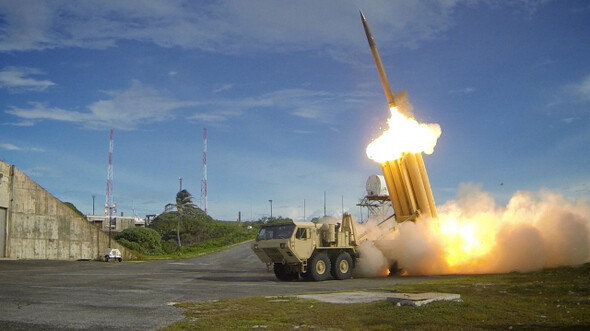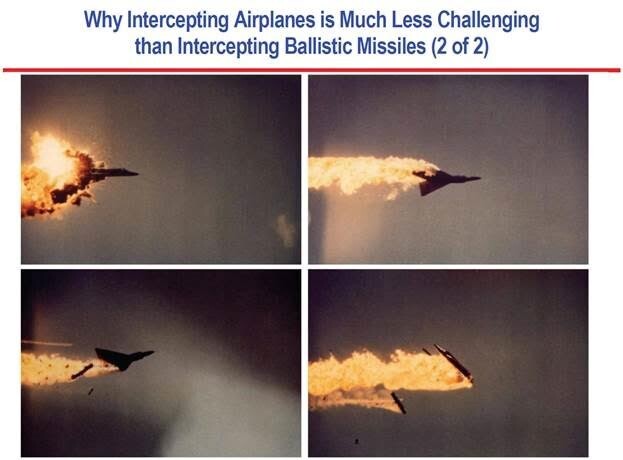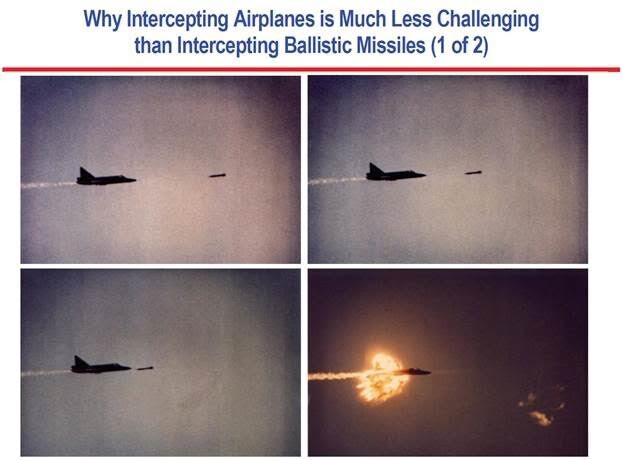hankyoreh
Links to other country sites 다른 나라 사이트 링크
Study: THAAD’s interception capability may not be reliable

The US is considering placing a Terminal High Altitude Area Defense (THAAD) system on the Korean Peninsula to block the North Korean missile threat - but a recent study suggests THAAD’s ability to intercept North Korean ballistic missiles may be unreliable.
According to the study, North Korean Scud and Nodong missiles are difficult targets because of their irregular trajectories, while any missile that is struck would pose the serious danger of its warhead falling to earth and exploding.
Theodore Postol, a professor at the Massachusetts Institute of Technology (MIT), and George Lewis, a visiting scholar at the Cornell University Institute of Peace and Conflict Studies, reached this conclusion on June 14 from an analysis on whether a THAAD system in South Korea could successfully intercept a North Korean Scud or Nodong missile.
The Hankyoreh was the first media outlet to acquire the findings from Postol and Lewis, both leading experts with years of research into US missile defense systems. While US experts and news outlets have previously noted possible problems with the use of Ground-Based Midcourse Defense (GMD) to protect the mainland US, the question of THAAD interception capabilities has remained a mystery, with few raising questions about the systems‘ deployment and export to allies. The new findings now appear to hold important implications for a full-scale debate on THAAD’s military efficacy.
The findings showed that both the North Korean Scud-B and Scud-C missiles, with ranges of around 300 and 600 km respectively, and the Nodong missile, with a range of around 1,000 km, would fall in the range of THAAD interceptability.
But they also concluded a THAAD unit would have difficulty accurately targeting the Scud-B and Scud-C missiles because of their irregular trajectory, which moves in a spinning or screw-shaped pattern rather than a straight line once it finishes its powered flight and reaches a target.
In the case of a Nodong interception, the same irregular movement issues apply, along with the basic US missile defense problem of being unable to distinguish genuine warheads from decoys. Noting that intercepting missile would have to be fired when the Nodong is at an altitude of over 105 km from its target, Postol and Lewis said the difference from a decoy would be difficult to identity at that height. While a decoy is lighter and would have a slower descent to earth, the thin air at that altitude would produce similar descent speeds, making the warhead and decoy difficult to tell apart.


The two scholars said that radars and infrared sensors can see the exterior properties of objects in space, but couldn‘t tell what is inside.
The issue of distinguishing warheads from decoys has been raised since the 1990s and is acknowledged even by the US Defense Department. The new study shows that it would also be an issue when using THAAD to intercept the Nodong missile.
Speaking at a Center for Strategic and International Studies (CSIS) seminar in Washington on May 20, US Joints Chief of Staff vice chairman Adm. James Winnefeld identified the identification issue alongside financial constraints as one of the key issues to be solved with the missile defense system.
Postol said, “I do not believe that any interceptor can do well enough to truly justify its cost and the effort of deploying it.”
“It seems reasonable to me that the South Korean government and citizen might want to mount some kind of missile defense simply because it is psychologically more comforting than doing nothing. If this is part of South Korean government’s calculus, the strategy of building its own defenses is quite sensible,” he added.
Postol and Lewis based their analysis on Missile Defense Agency (MDA) figures on THAAD capabilities, previous use of the Patriot Advanced Capability (PAC) missile in combat, test results for the Standard Missile 3 (SM-3), and North Korea’s potential response capabilities.
By Park Hyun, Washington correspondent
Please direct questions or comments to [english@hani.co.kr]

Editorial・opinion
![[Editorial] Does Yoon think the Korean public is wrong? [Editorial] Does Yoon think the Korean public is wrong?](https://flexible.img.hani.co.kr/flexible/normal/500/300/imgdb/original/2024/0417/8517133419684774.jpg) [Editorial] Does Yoon think the Korean public is wrong?
[Editorial] Does Yoon think the Korean public is wrong?![[Editorial] As it bolsters its alliance with US, Japan must be accountable for past [Editorial] As it bolsters its alliance with US, Japan must be accountable for past](https://flexible.img.hani.co.kr/flexible/normal/500/300/imgdb/original/2024/0417/6817133413968321.jpg) [Editorial] As it bolsters its alliance with US, Japan must be accountable for past
[Editorial] As it bolsters its alliance with US, Japan must be accountable for past- [Guest essay] Amending the Constitution is Yoon’s key to leaving office in public’s good graces
- [Editorial] 10 years on, lessons of Sewol tragedy must never be forgotten
- [Column] A death blow to Korea’s prosecutor politics
- [Correspondent’s column] The US and the end of Japanese pacifism
- [Guest essay] How Korea turned its trainee doctors into monsters
- [Guest essay] As someone who helped forge Seoul-Moscow ties, their status today troubles me
- [Editorial] Koreans sent a loud and clear message to Yoon
- [Column] In Korea’s midterm elections, it’s time for accountability
Most viewed articles
- 1‘Right direction’: After judgment day from voters, Yoon shrugs off calls for change
- 2[Editorial] Does Yoon think the Korean public is wrong?
- 3[Editorial] As it bolsters its alliance with US, Japan must be accountable for past
- 4Where Sewol sank 10 years ago, a sea of tears as parents mourn lost children
- 5Strong dollar isn’t all that’s pushing won exchange rate into to 1,400 range
- 6[Guest essay] Amending the Constitution is Yoon’s key to leaving office in public’s good graces
- 7Japan officially says compensation of Korean forced laborers isn’t its responsibility
- 8[News analysis] Watershed augmentation of US-Japan alliance to put Korea’s diplomacy to the test
- 9Korea ranks among 10 countries going backward on coal power, report shows
- 10US, Japan and China move to become self-sufficient in semiconductors